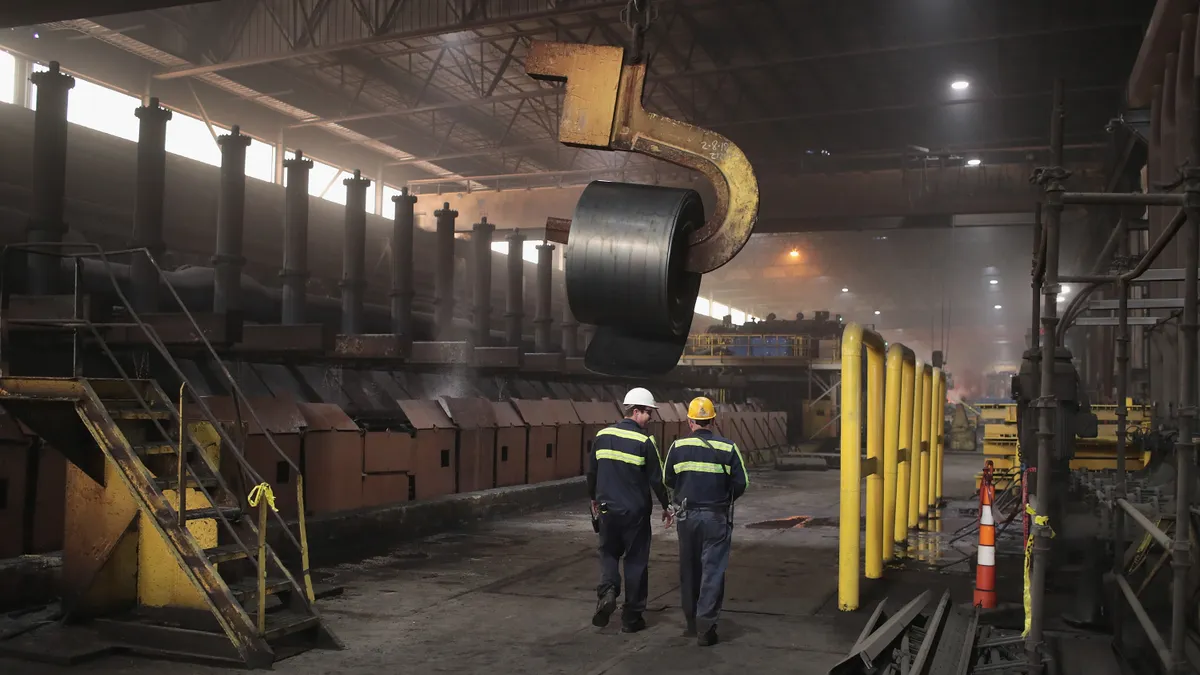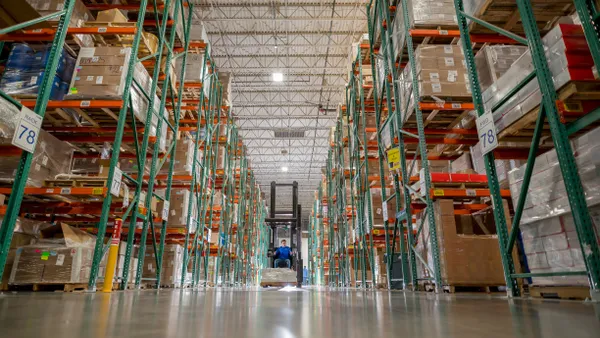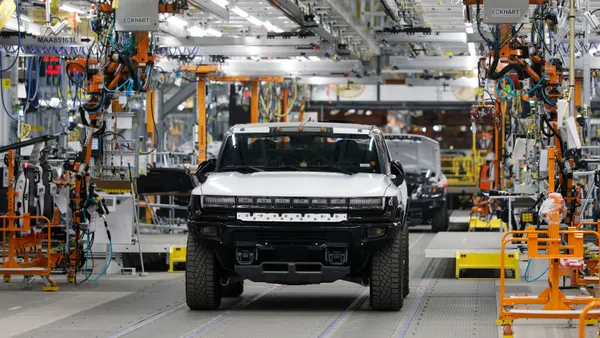Dive Brief:
- Inventories began to fall again in July after showing growth in May and June as slow supplier deliveries continue to hamper companies' efforts to grow stock levels, according to the most recent figures from the Institute for Supply Management's manufacturing report and comments by ISM Manufacturing Business Survey Committee Chair Timothy Fiore.
- The ISM Manufacturing Inventories Index fell to just under 49 in July. (All readings under 50 indicate falling inventory levels.) "It's a timing issue," Fiore said. "And we've been saying this now for months is that the inventory account is not going to really expand at any great level until the supplier delivery number comes down to some kind of manageable amount."
- Fiore said a more manageable level would be around the high 50s to low 60s on the supplier delivery index — the index was at 72 in July, which was an improvement over the 75 level seen in June. (Levels above 50 on the supplier delivery index indicate slowing deliveries.)
Manufacturers struggle to grow inventories
Dive Insight:
The manufacturing sector continued to show strong demand in July. So with high demand and slow supplier deliveries, factories were "sucking inventory" and drawing down levels, Fiore said.
"Overall demand grew again but at a slightly slower pace with the index performing well for the 13 straight months," he said on a press call Monday.
This demand was highlighted by the continued growth of new orders and the customer inventory levels still coming in as too low. But the sector's expansion continues to be held back by transportation issues and hiring difficulties that are constraining suppliers, he said.
"Purchases continue to have long lead times due to shortages of raw materials and labor force, as well as logistics challenges," one survey respondent in the computer and electronic products industry told ISM.
Fiore agreed that most manufacturing materials are still in short supply, which is pushing up prices. And getting those materials into inventories is taking a long time.
"Raw materials lead times continued to be near record highs," he said.
These are issues that manufacturers have spoke about at length in earnings calls over the last year with those comments continuing in recent weeks.
Last week, Tempur Sealy CFO Bhaskar Rao noted that supply chain constraints were responsible for the company's inventory levels falling to a "suboptimal level."
"As a result of decreased inventory and continued record demand in the third quarter, the order to delivery time on Tempur is temporarily extended by several weeks," Rao said.
Coca-Cola CFO John Murphy said Wednesday that the international beverage manufacturer has not been immune to these issues, either.
"While experiencing some isolated pressure points, our team is navigating the challenges well through supplier diversification and inventory management," Murphy said.
But as employment levels improve — the ISM employment index grew 3 points in July into expansion territory — Fiore expects deliveries and inventories to improve.
"I see this supplier delivery number relaxing a bit with the inventory number coming up," he said. "And as employment number grows so will the production numbers."
This story was first published in our weekly newsletter, Supply Chain Dive: Operations. Sign up here.













